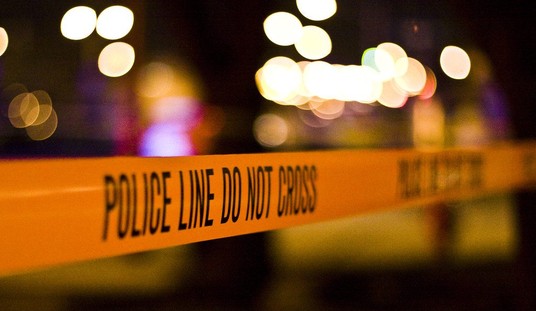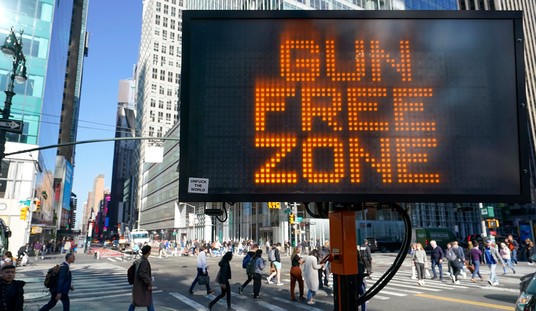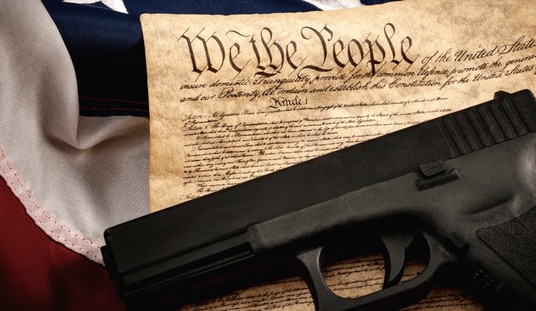While the FBI reported earlier this week that violent crime was down nationwide last year, and crime analysts like Jeff Asher are predicting an even bigger drop in homicides when this year’s final crime stats are tallied, Washington, D.C. is bucking that trend.
Homicides have increased by 35% in the District this year, with 224 murders reported through October 18th. Robberies are soaring too; up 68% compared to last year, and there’ve been smaller increases in the number of sexual assaults and aggravated assaults reported in our nation’s capitol as well. Non-violent crime has also increased by 25% in D.C, largely the result of an incredible 102% surge in car thefts.
Amidst the growing dangerousness in D.C., Joe Biden’s U.S. Attorney for the District of Columbia is bragging about an increased number of prosecutions by his office, even though Matthew Graves is still rejecting more than half of the cases that are brought to his office.
For years, the so-called “no paper rate” steadily climbed. It’s the rate at which arrests by D.C. police were not prosecuted in court. In fiscal year 2022 (ending Sept. 30, 2022), two of every three criminal arrests in D.C. were not prosecuted – 67%. In fiscal year 2023 (ending Sept. 30, 2023), that rate dropped to 56%. It is lower, but still higher than nine of the past 10 years and almost twice what it was in 2013.
Graves said the high number was due in large part to D.C.’s shuttered crime lab not being able to test drug evidence. He has since worked with the Drug Enforcement Administration to test more D.C. cases.
In an interview with the I-Team, Graves acknowledged last year’s rate was too high.
“There were absolutely too many cases where we wanted to go forward and couldn’t go forward,” he said. “We worked hard to address that issue.”
…
While admitting not prosecuting two-thirds of people arrested is too high, Graves wouldn’t say what the right number is. Graves says it is not 100%, either. In a presentation for reporters, Graves explained the 42% of cases his office does not prosecute.
- 18.2% are cases in which a victim does not want to assist in the prosecution. According to Graves many of those are low level cases. He offered that one such group of cases is minor domestic violence in which D.C.’s “mandatory arrest” policy mandates police arrest someone.
- 13.9% are cases in which there is insufficient evidence.
- 7.2% are not prosecuted due to prosecutorial discretion.
- 2.9% are declined when prosecutors determine there is an affirmative defense such as self-defense.
Of all those categories, Graves told reporters the 13.9% of cases in which there is “insufficient evidence” will be the easiest place to make progress. He said some of that could be due to the Metropolitan Police Department’s short staffing; others on a need to retrain D.C. officers on recent appeals court cases affecting how firearm evidence is handled.
The MPD would disagree about presenting cases with insufficient evidence, but finger-pointing between law enforcement agencies is nothing new in D.C. And while Graves touted a 90% charging rate for “serious” offenses in the District, local news outlet NBC 4 pointed out that his definition of “serious” leaves out several categories of crime that most of us would consider to be pretty important.
The statistics from his office however narrow the definition of “most serious violent crimes” to homicide, assault with intent to kill, carjacking and first-degree sexual assault. They do not include robbery or assault with a dangerous weapon, which includes most shootings. As first reported by DC Crime Facts and verified by reports from the D.C. Sentencing Commission, prosecution rates for assault with a dangerous weapon were 66% for 2019 to 2022.
Keep in mind, those prosecution rates only account for incidents in which an arrest was made. While the Metropolitan Police Department publicly releases its homicide clearance rate (62% of murders resulted in an arrest last year), it doesn’t provide those numbers for non-fatal shootings, but it’s safe to say that the rate is likely far lower than it is for homicides. A recent study that looked at Boston found the homicide clearance rate was more than 20 points higher than for non-fatal shootings (43% for homicides, 19% for non-fatal shootings), and those disparate rates aren’t uncommon around the country.
Despite Graves’s tough talk about going after violent offenders, many of them will never face his team of prosecutors in court; either because police haven’t made any arrests or his office has refused to accept the cases presented. D.C, officials regularly blame the “availability of guns” for the District’s crime woes, which in itself is ridiculous given the restrictive nature of D.C. gun laws and the lack of any full-service gun store in our nation’s capitol, but the real issue appears to be a lack of consequences for violent offenders, and the U.S. Attorney’s office plays a major role in shaping that sad reality.









